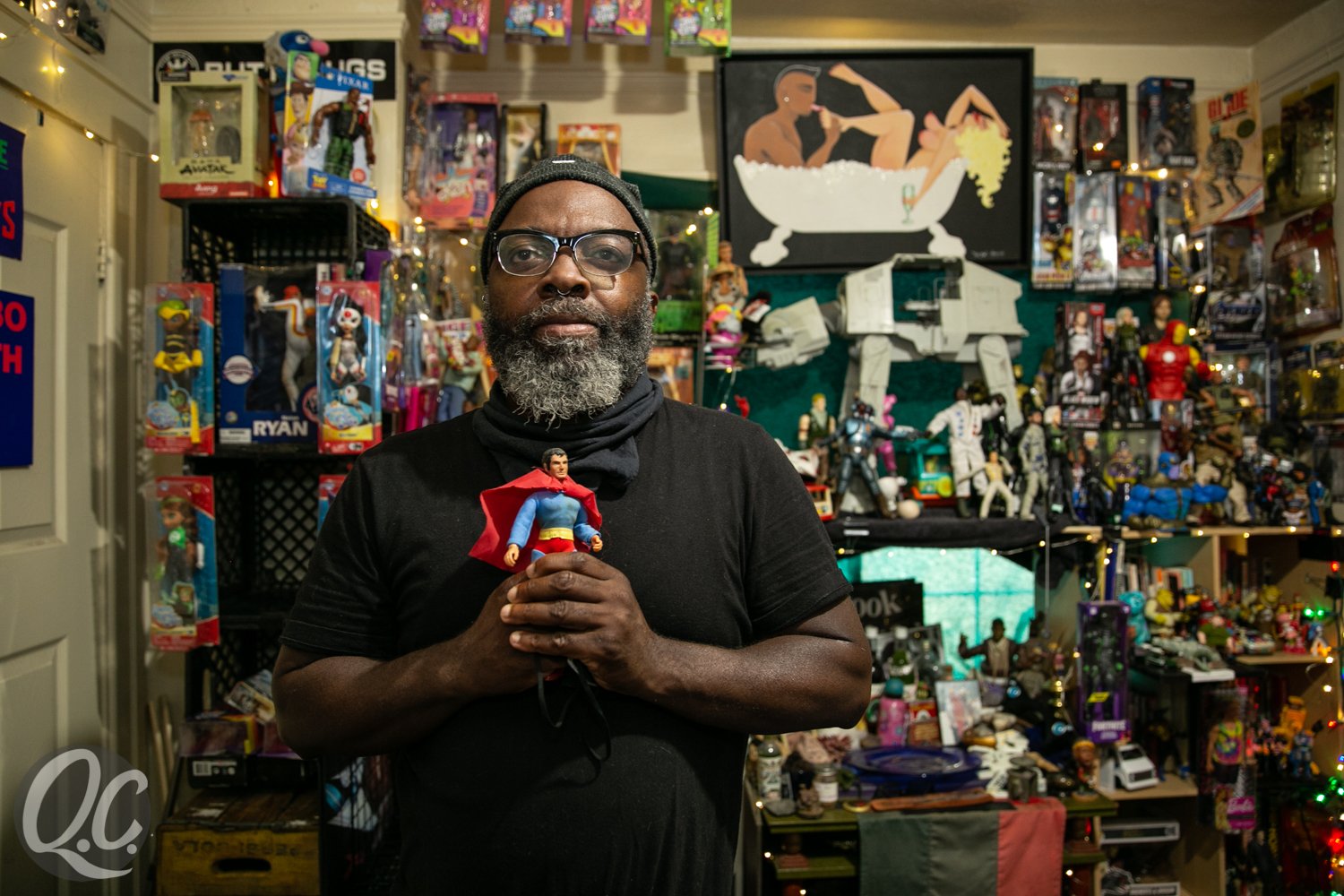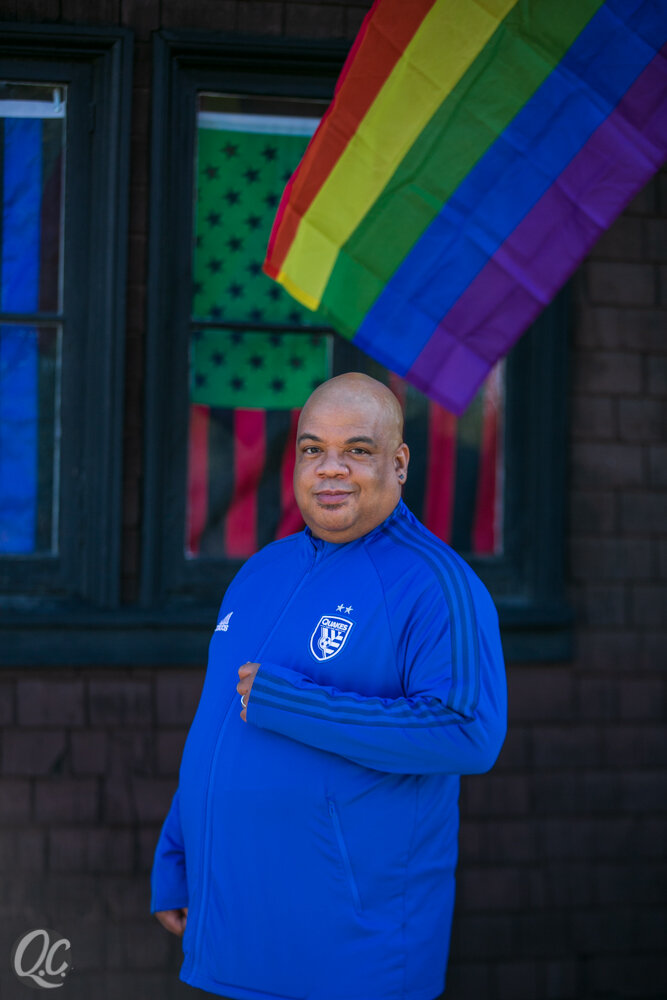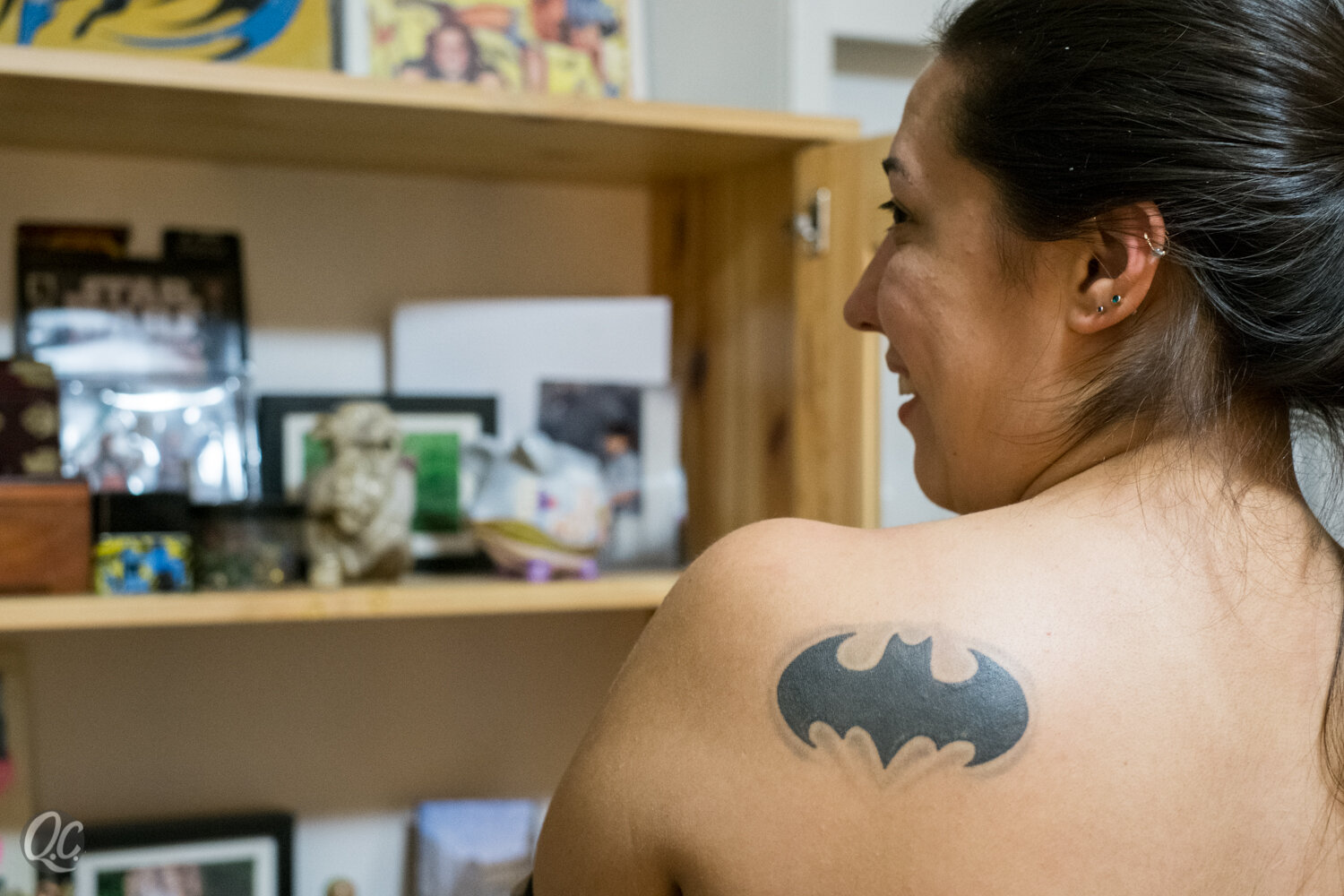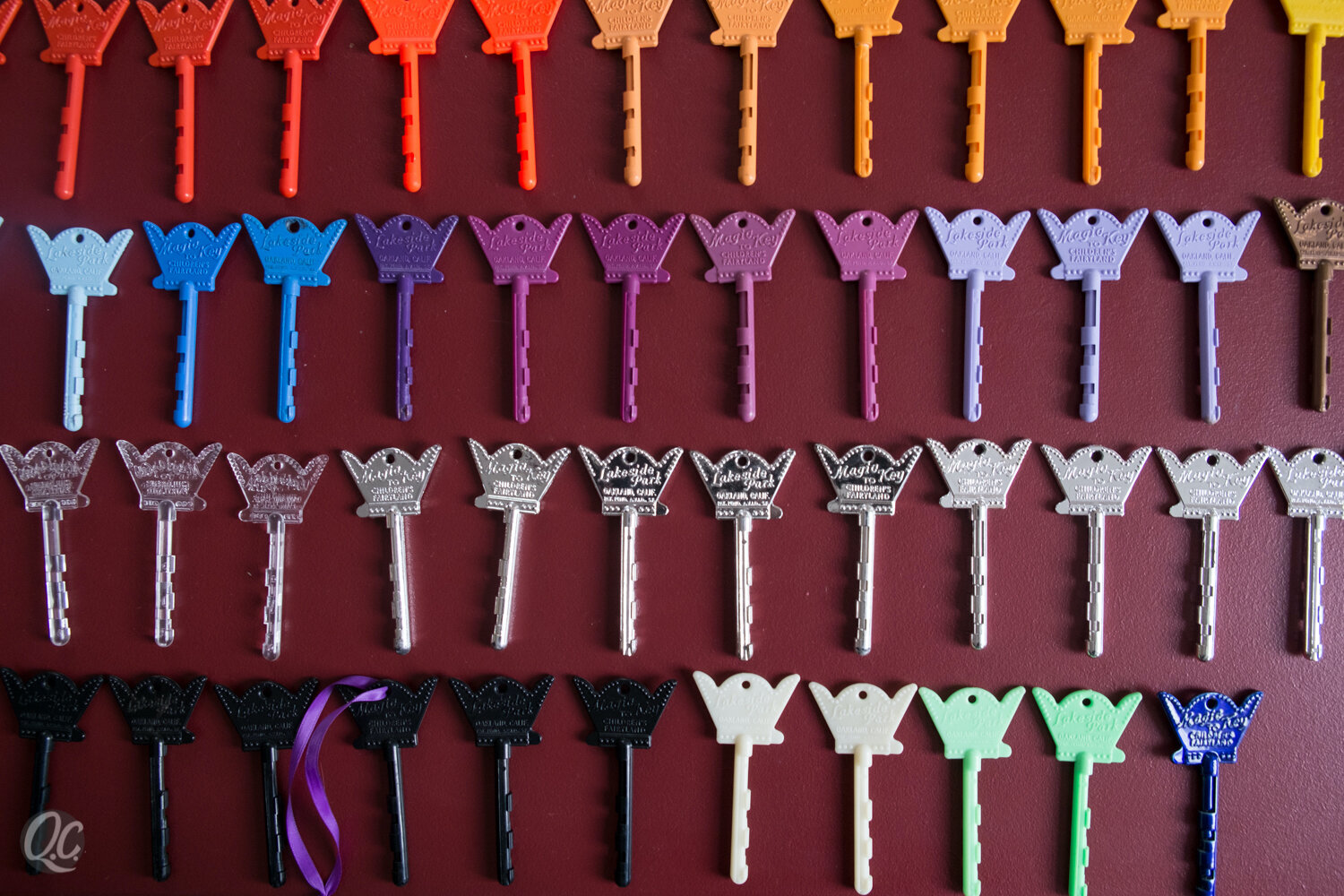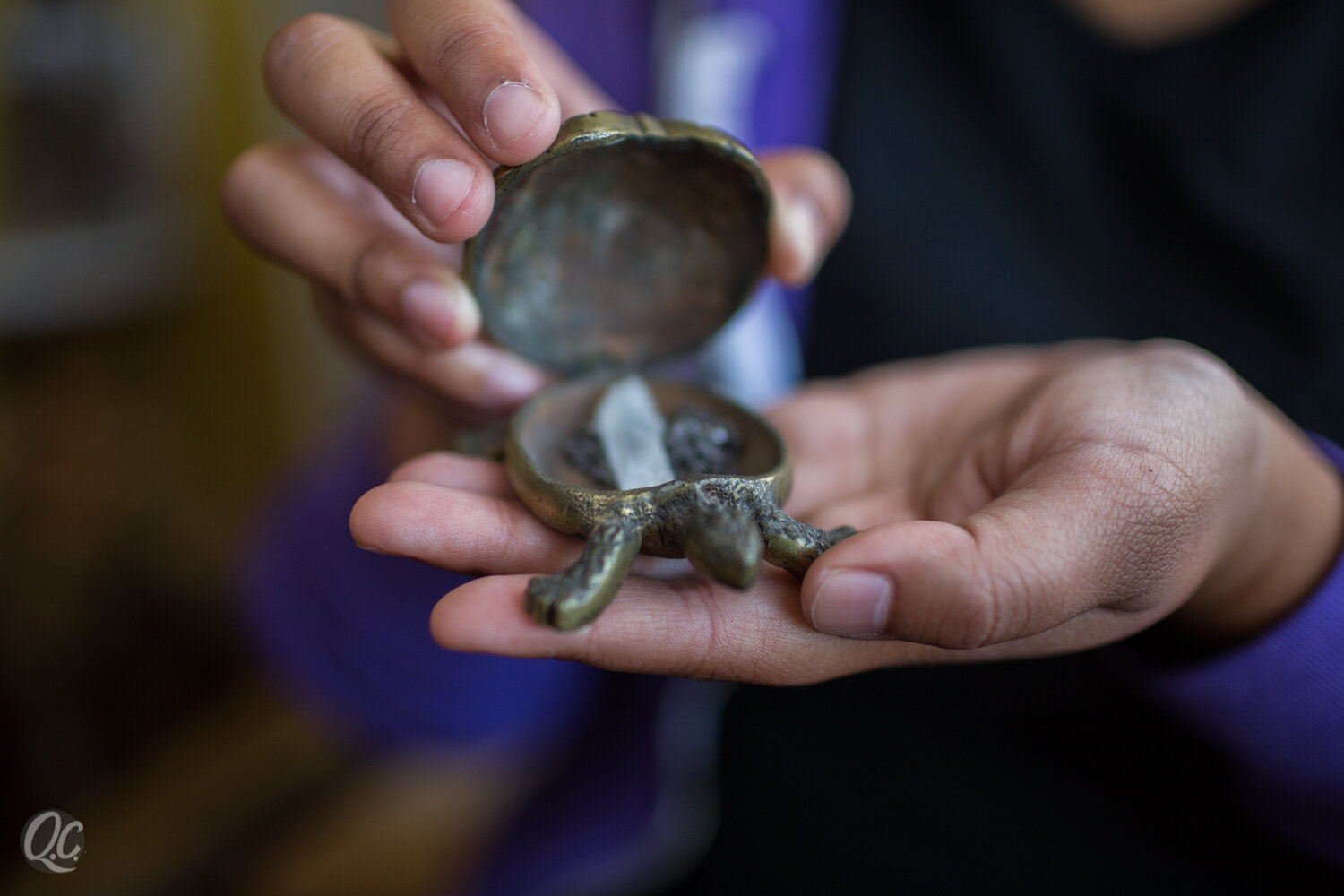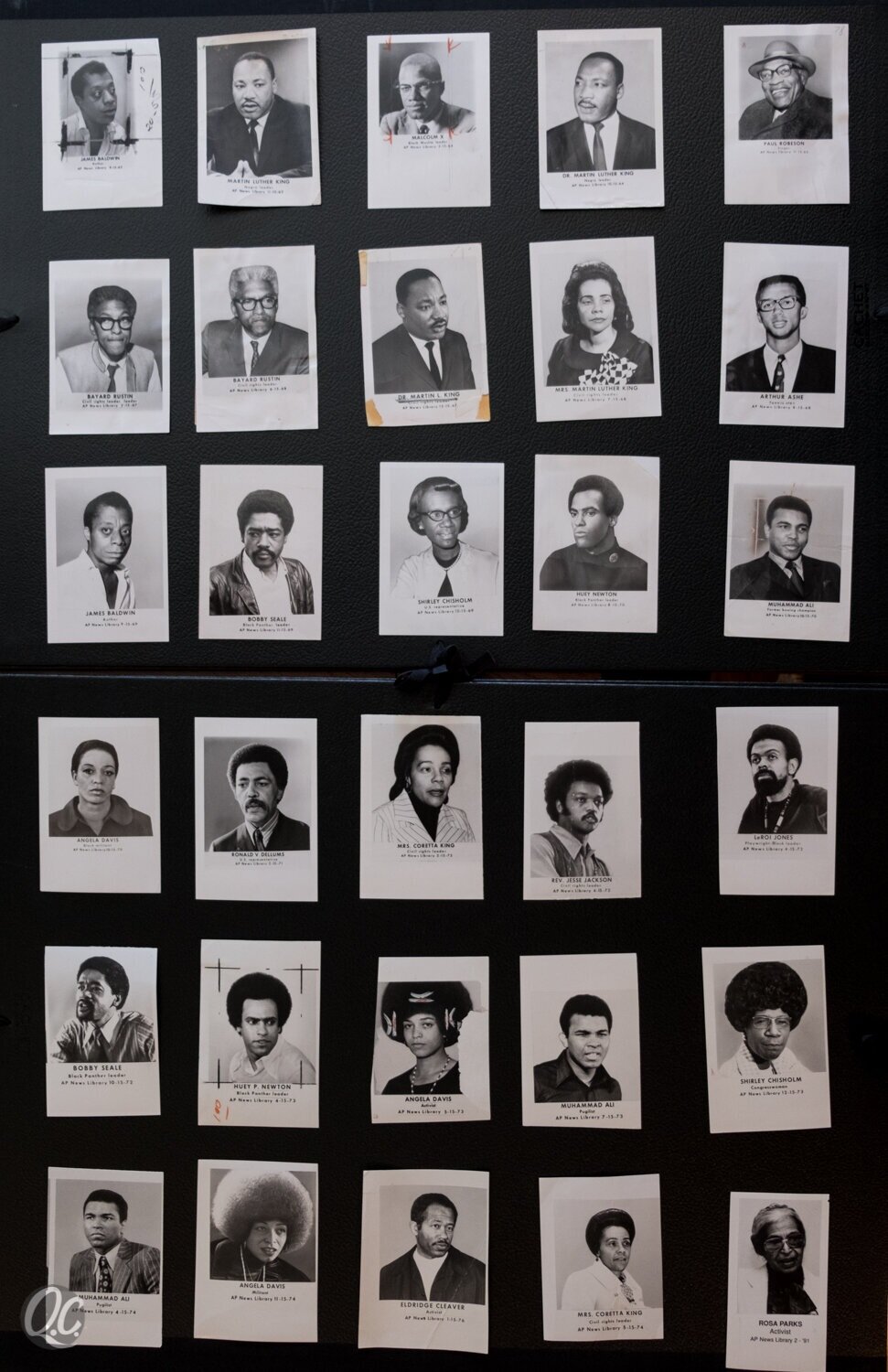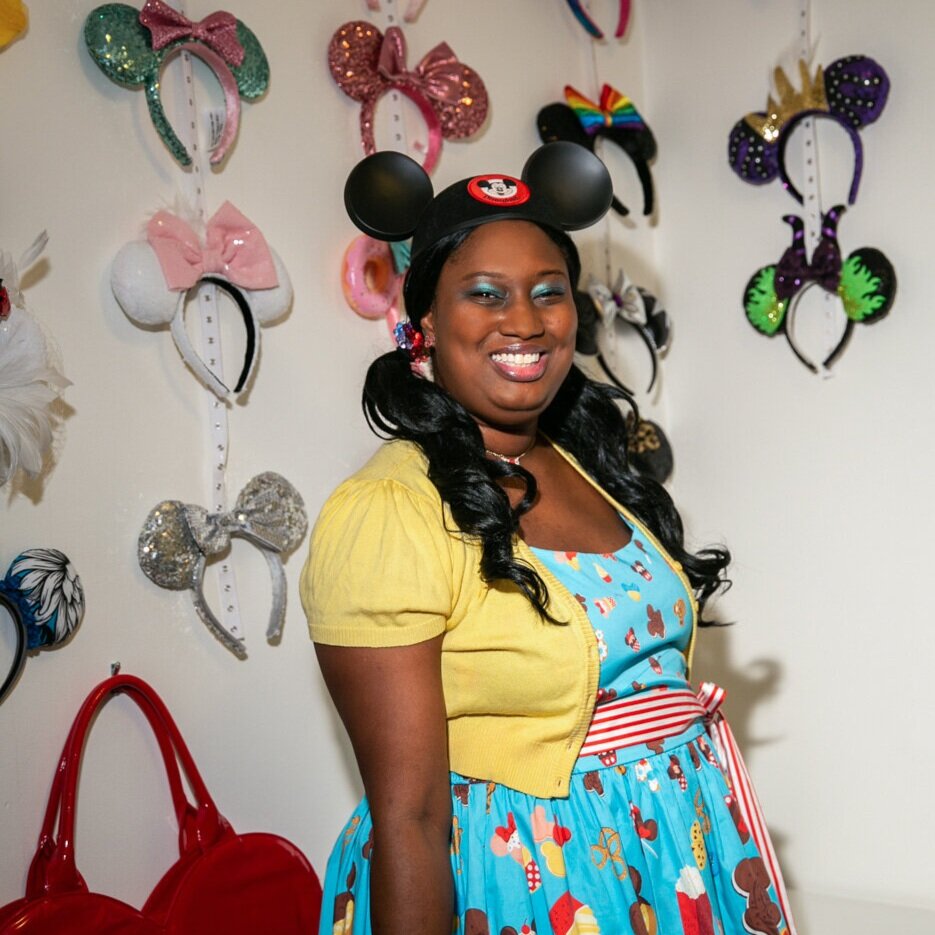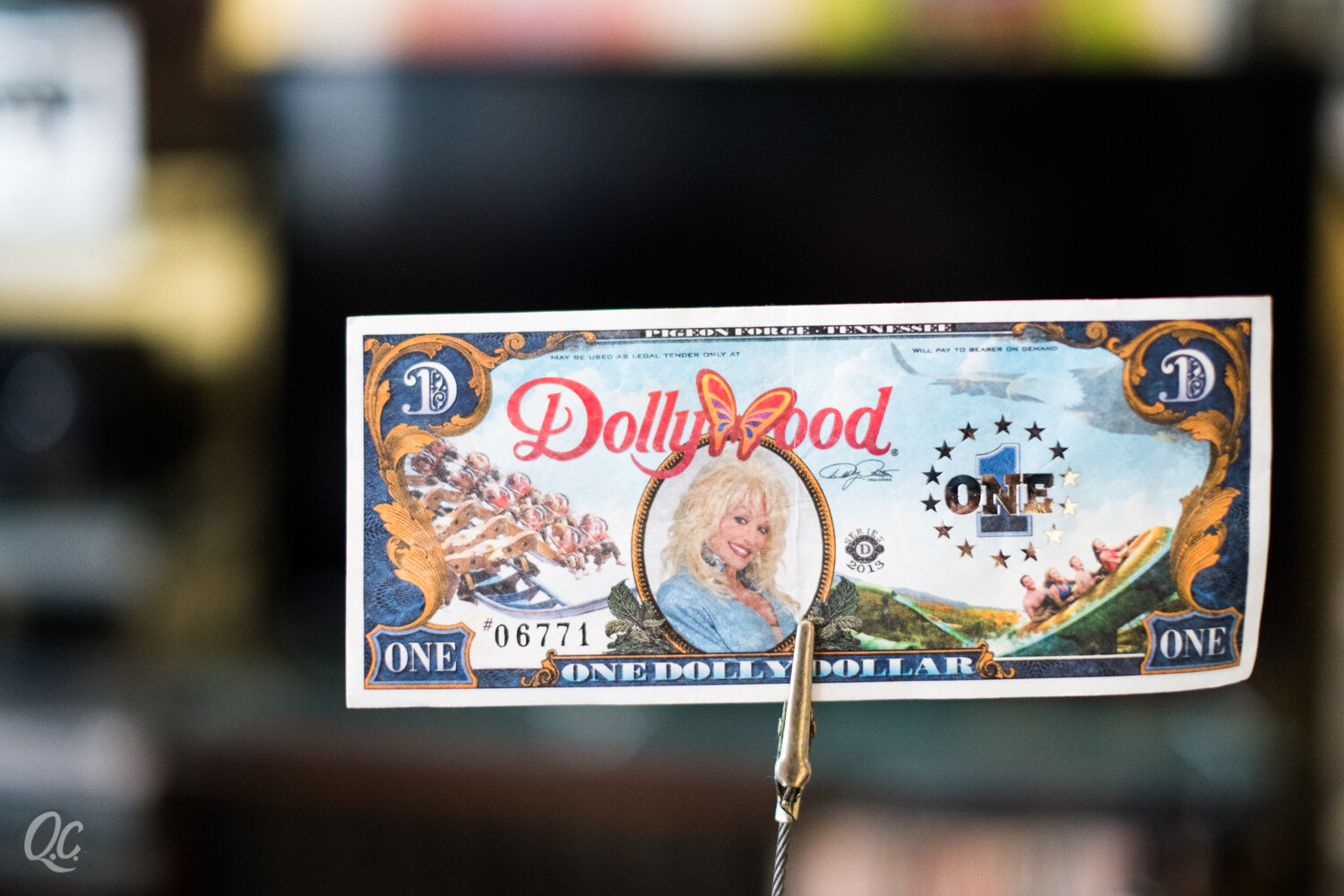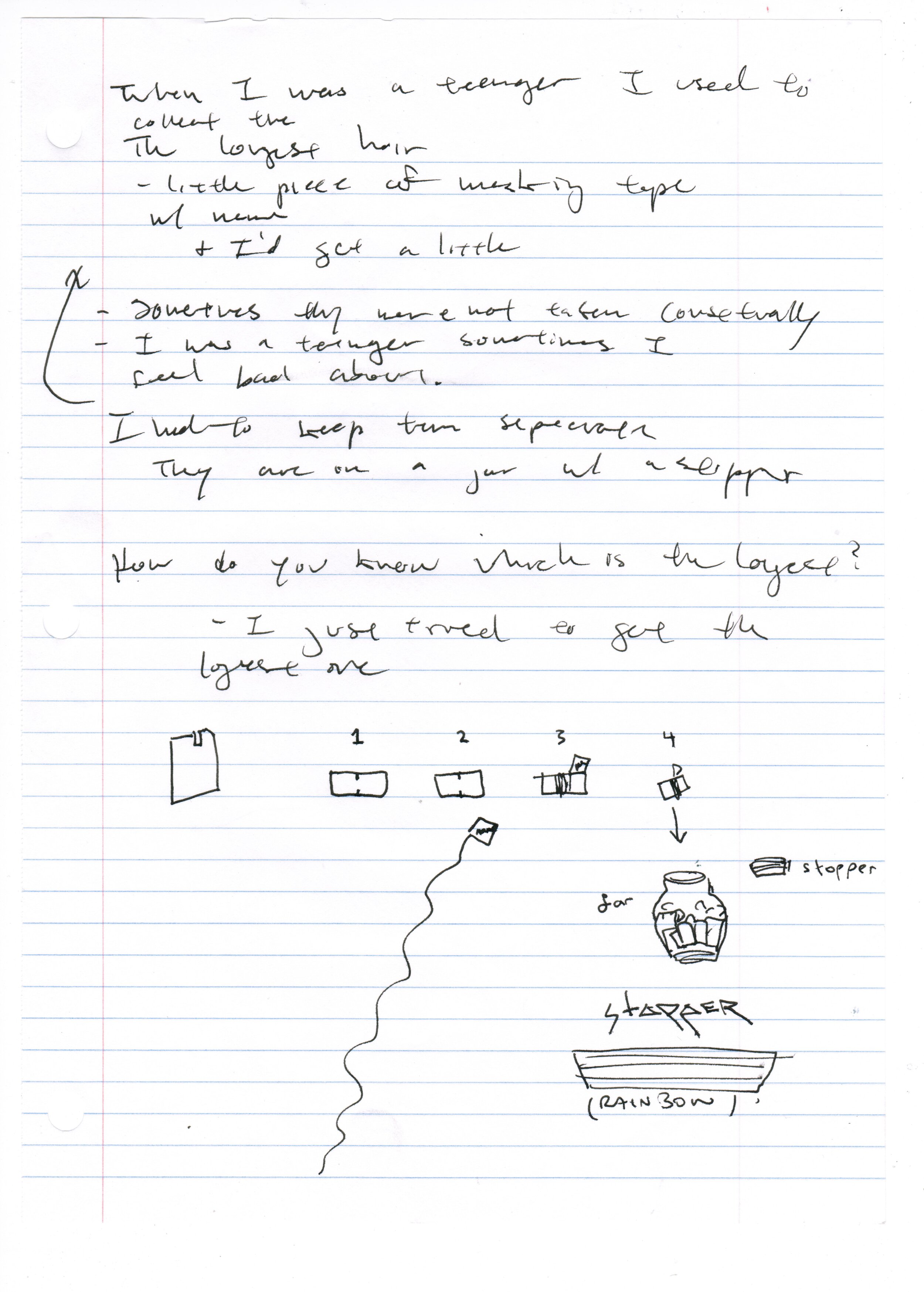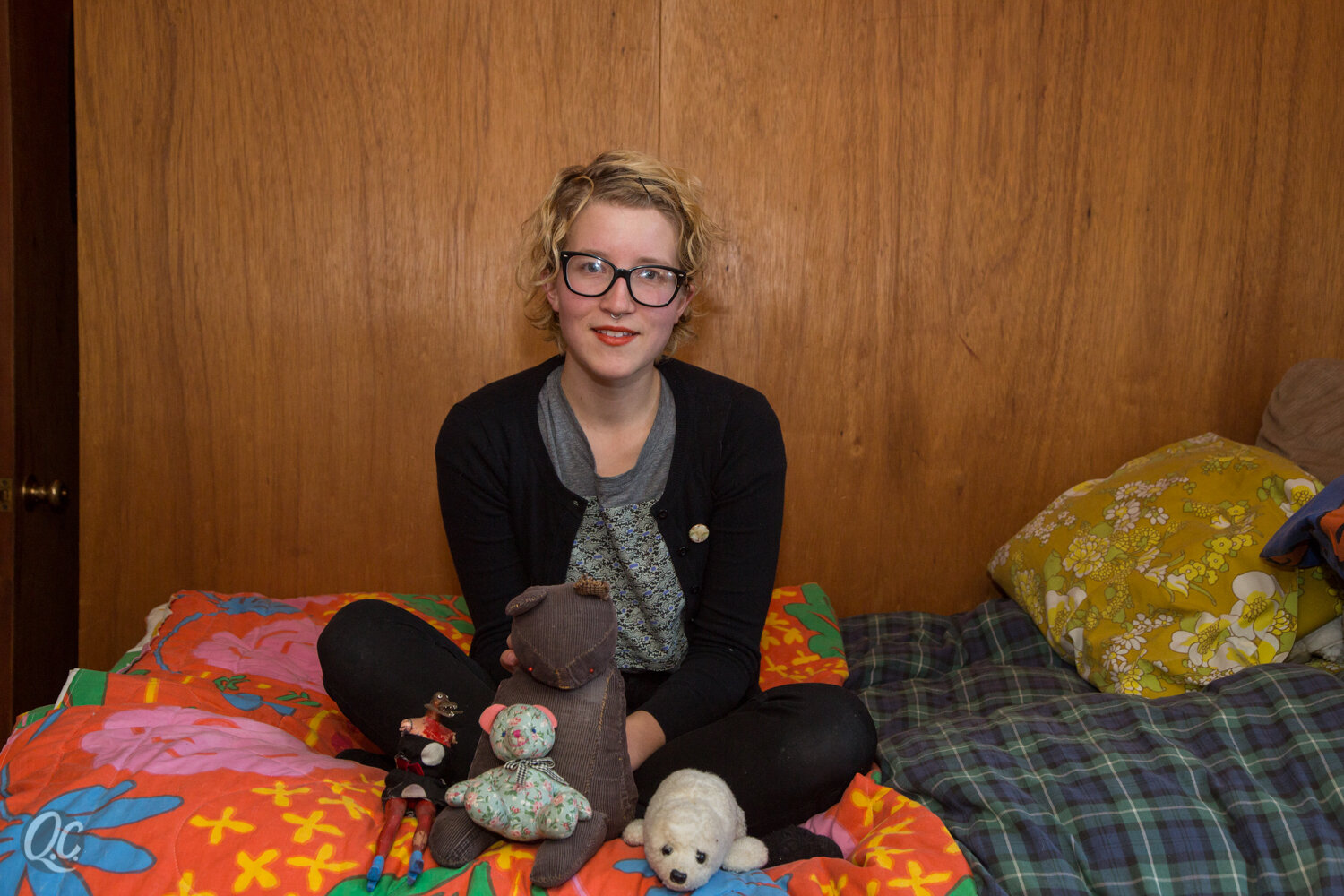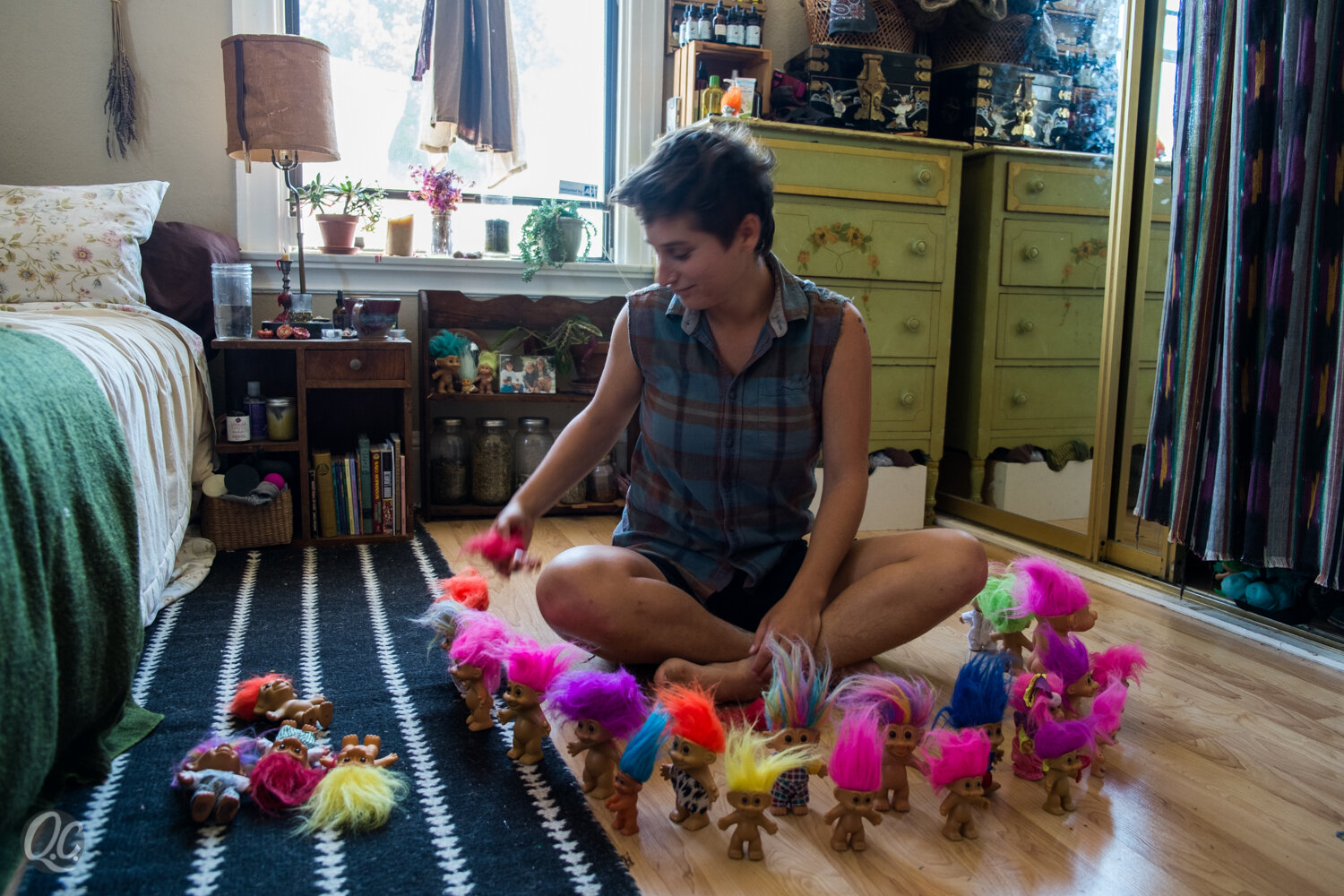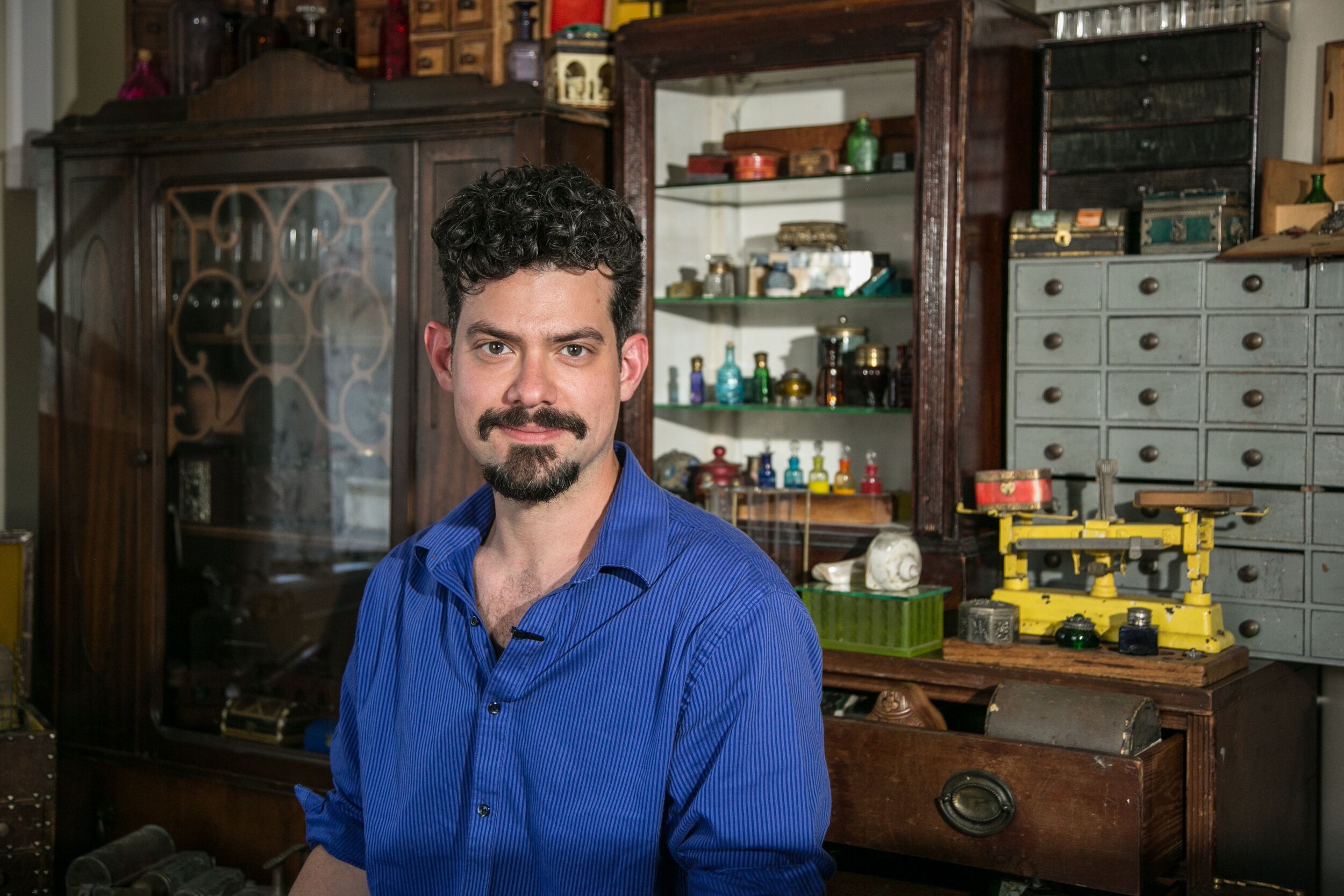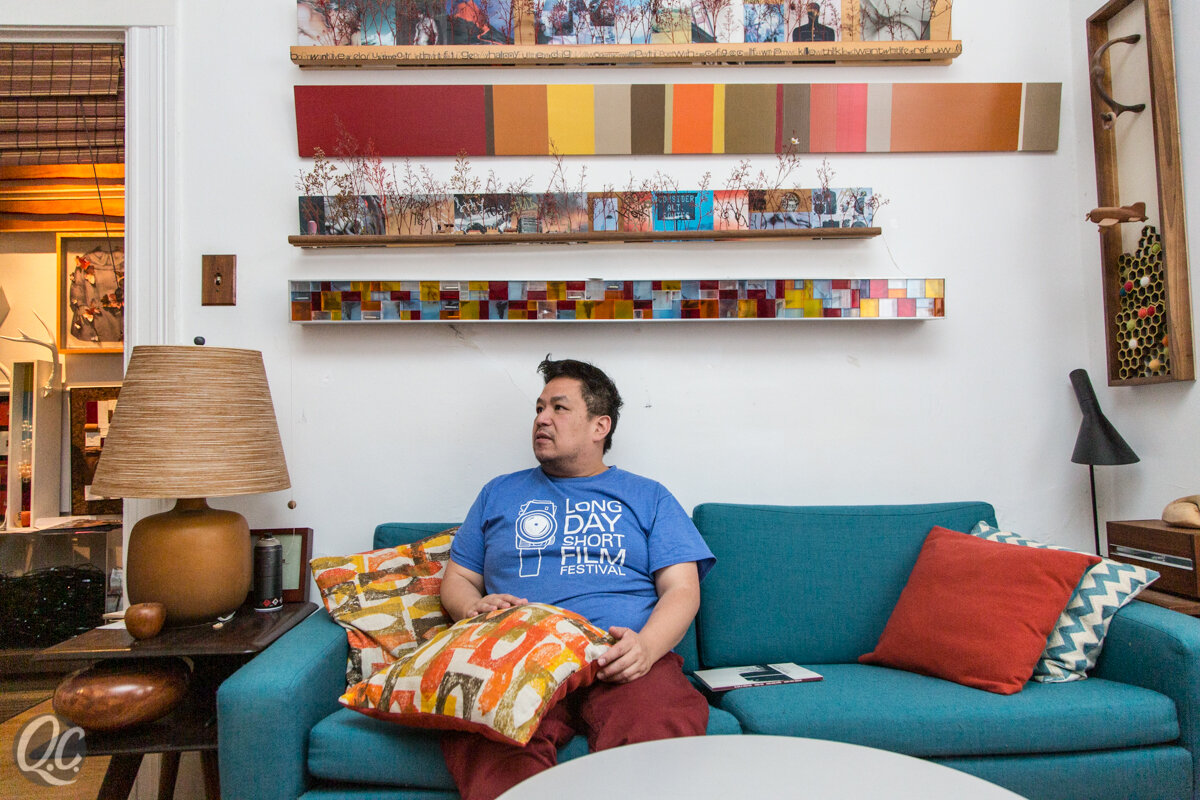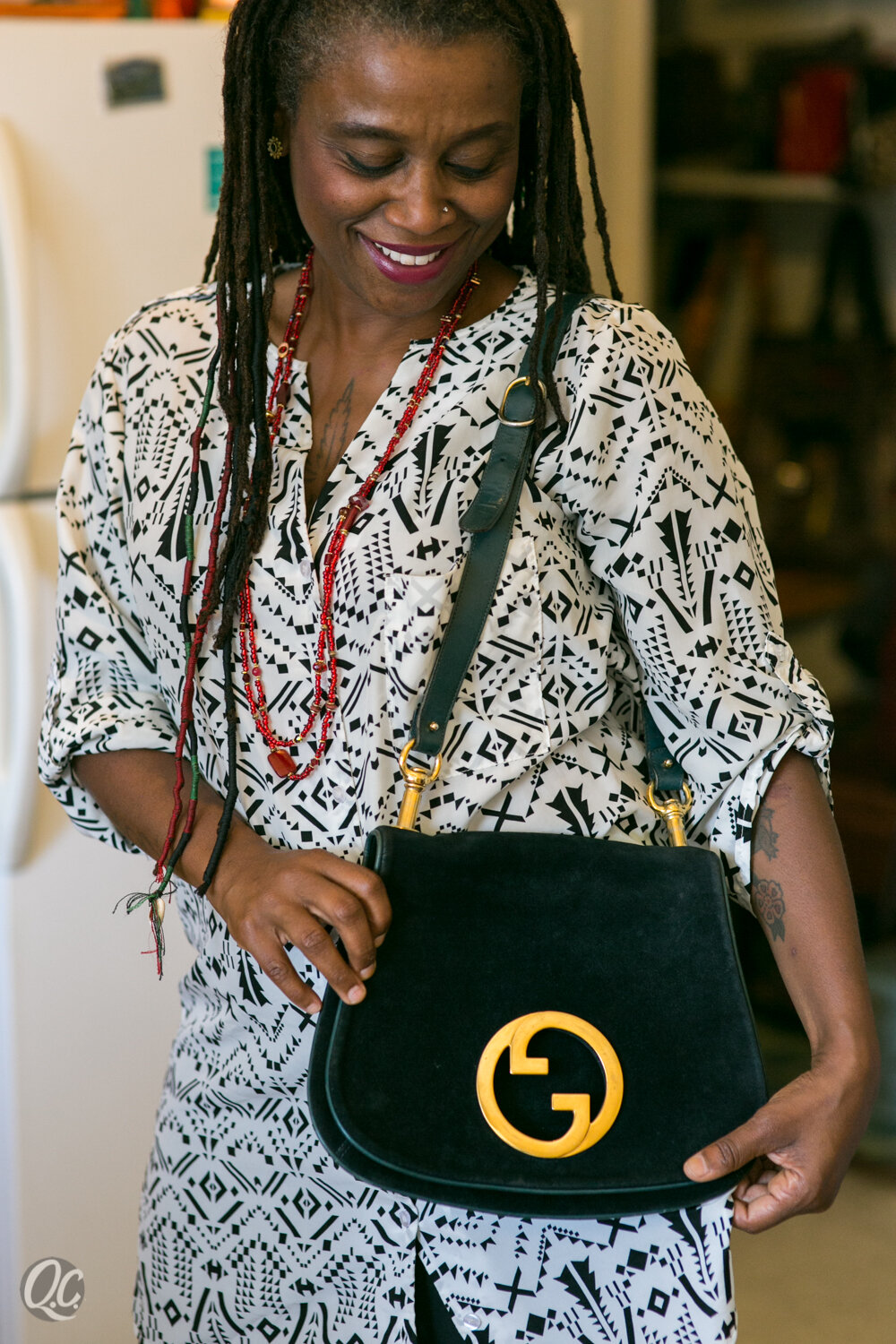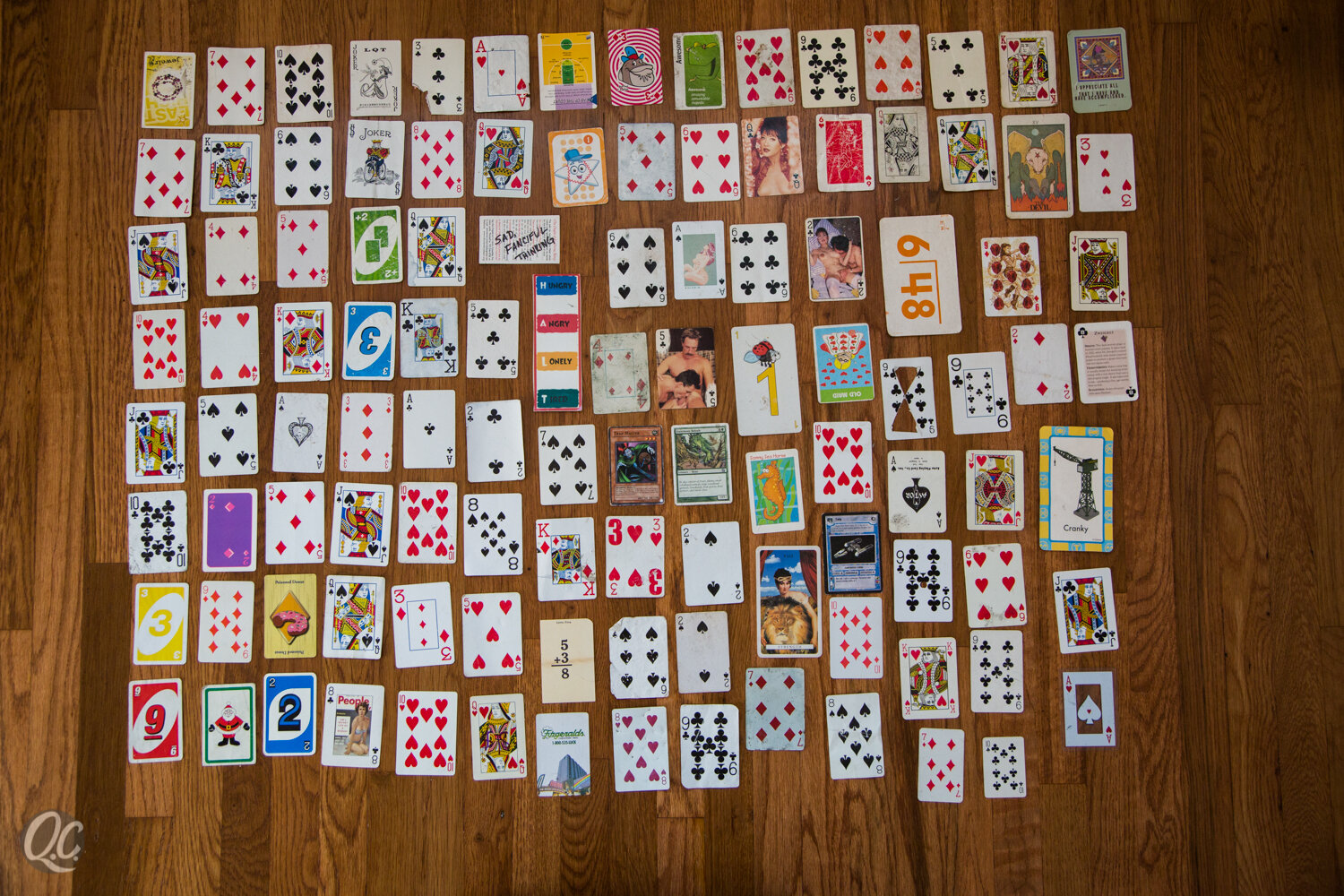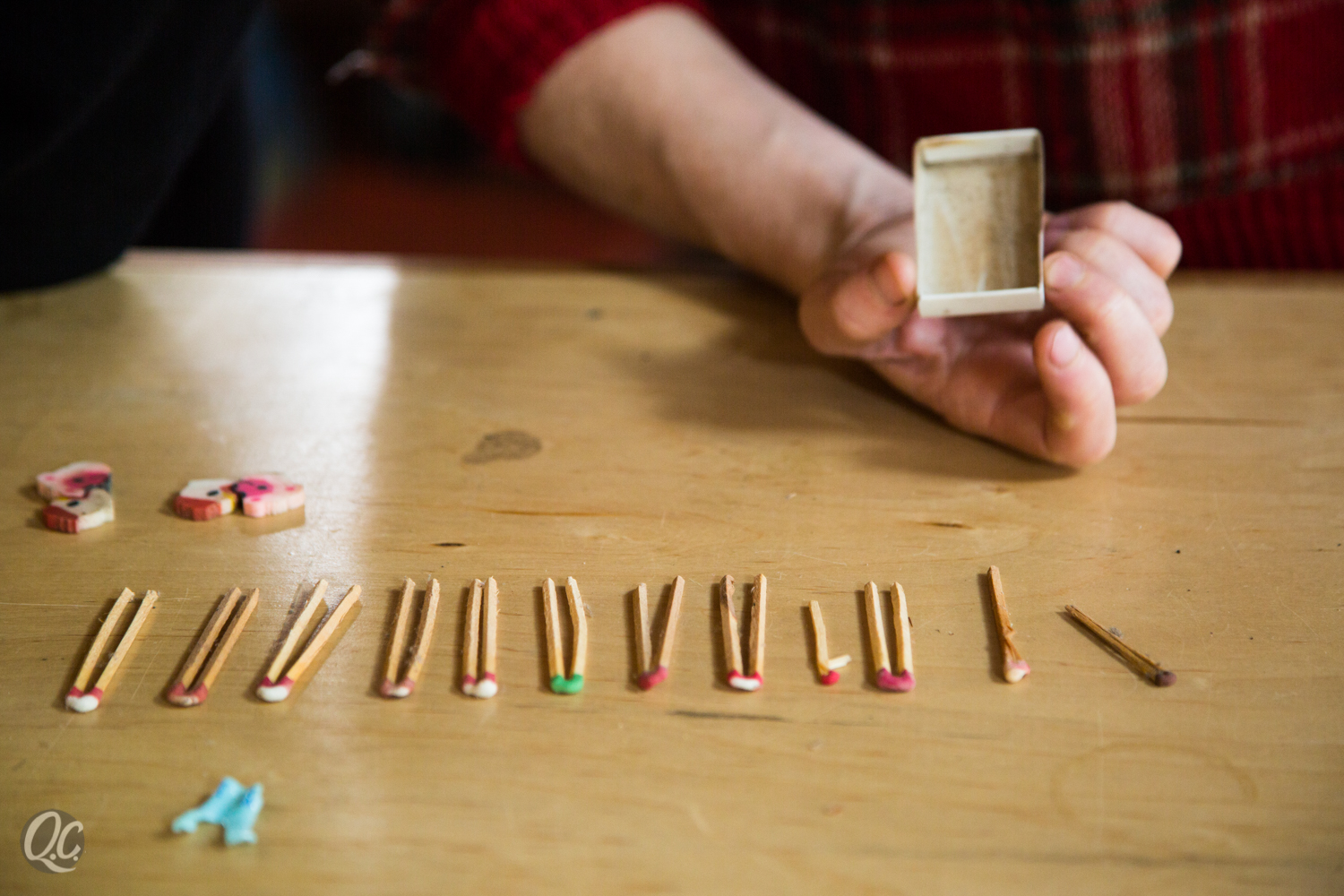Nick: Boxes, Vessels & Pressed Flowers
Nick describes his box collecting and the joy it brings to his life.
“I get sounds and visuals mixed up a lot.”
NICK: I collect a variety of things. I collect boxes. I collect jars. I collect pressed flowers. I used to collect playing cards. I had hundreds of them. They're in my parent’s attic now. Wherever I went, I'd purchase playing cards. My mother is an antiques dealer. She was a florist for a while. A lot of my most unique items come from her or are her findings.
I think the nature of collecting is innate in human beings. Boxes, for me, make a lot of sense. I had a very sentimental experience with a particular box when I was young. When I was four years old, I was a kind of a kleptomaniac. I stole money from my parents’ wallets. My dream was to build a cash register; I was obsessed with building a cash register. Any type of media that I was dealing with, like Legos or Connects, I was always trying to build a cash register out of to put cash in. This is from age 4 -7 or something like that. At one point in time I stole this box from my father. I hid all my findings in it behind the door to my room, because, you know, when people open the door you can't see behind it.
{Nick retrieves the box and opens it lovingly}
I used to just put things in here, and at the time it had this wonderful smell of cedar. It still kind of has it. It also smells like pencils now. This box belonged to my grandfather, who I've never met. Eventually my mother found all the stuff behind the door and they were really, really worried about what I would turn into. They took it all back and chastised me. My father gave it back to me later on.
Another possible reason for my obsession with boxes, and I do see it as an obsession, is this thing that happened at University of North Texas. I was recording my boxes—the sounds of the drawers opening—which to me that sound is just so sexy. I recorded this box that I have with big drawers, and I went to the studio and was splicing up the sounds and didn’t realize that all the levels in the mixer were at their max. So I played this sound of a drawer closing which normally sounds like Shhhhh, but when I played it in the studio, it was this gigantic sound and it scared the living shit out of me. It hit me on an emotional level. All these emotions just went BAM and I was crazy afraid. I just jumped and started crying. I had an emotional breakdown because of this drawer sound. It was the breaking down of a lot of situations in my mind. That sound of closing; it is indescribable. It is still very strong with me.
*photo by Monica Semergiu
The flowers came about when I was walking with my girlfriend, Tory, through Rockridge. There was this consignment store that she wanted to go in to look for pressed flowers. She said this was a great place because an old woman runs it and grandmothers are the only people that can make proper pressed flowers. I thought, Bullshit. Her birthday was coming up, so I spent a whole month collecting every single flower in Berkeley and pressing it. On her birthday, I covered her whole apartment in pressed flowers and then I couldn’t stop. I just continued collecting more and more and more. I keep them in an archival box.
“I think collecting is a way of being in control of your surroundings and to some extent, if you are trying to be in control of your surroundings then you, in fact, are not.”
ZOE: What makes a good box or a good jar or a good flower? What are the characteristics that speak to you?
N: It has to be unique. If you are a collector, that should be your first rule, unless you are collecting something really rare. Otherwise I'd just go to Michael’s and buy every single box that they sell.
Detail of Nick’s color blocked boxes in red.
Detail of Nick’s color blocked boxes in blue.
I'm searching for this particular box that can house all of my inks and all of my ideas. I dunno. It is really abstract. I want an apothecary cabinet of sorts. Some people watch fashion sites or fashion porn; my object porn would be apothecary collections. When I'm in a bad mood, I'll just scan google for boxes and jars and cabinets. I really like hidden things. I have this really cool box that is an antique, and you open it up and it has all these vials.
With the flowers it is definitely the color. Shape and patterns make them much more attractive, as well. However, there are some flowers I just despise, like agapanthus! Oh my god, I can’t stand them. But I think it is because they are abundant here, and I am drawn to uniqueness and complexity. I don’t have any daisies in my collection—oh that is not true, I do. I don’t have any dandelions in my collection. Hmm…I might. I might have some dandelions.
Z: If resources and space were not an issue, how would you display your collections?
N: I would incorporate the flowers and the boxes into a multimedia event with sonic representations of the flowers themselves. I'd also display the flowers alongside the visual art that I do. The boxes and jars I've used already in performance, and I think that I will continue to do that—sonic pieces with my collections.
Z: Your collections seem to carry strong sound significance to you.
N: Yeah, I get sounds and visuals mixed up a lot. Like I was leading a workshop on color theory, and I just started talking about music for a second. And I thought, Wait a minute, this is not a music lecture; it is a color lecture. I think of a lot of these things as the same and it’s difficult for me to separate them.
Vials of pigment for conducting orchestra.
Detail of the Key system used to conduct an orchestra with boxes and pigments.
Z: Describe the sonic pieces you’ve done with your jars and boxes.
N: For my master's thesis in music, I utilized my collection by conducting instrumentalists with jars and boxes. I created notations that would correspond to the color of ink that was dripped inside the jars to xylophones and glockenspiels and other keyboard instruments. The boxes were used to conduct bass drums. I had two double bass, three cellos, a woodblock and some other auxiliary percussion. The opening or closing of a particular box would correspond to a song cue. Some of the boxes corresponded to only certain instruments, so I would use them for improvisation—to be able to manipulate or to conduct the ensemble on the spot. How much the boxes opened would correspond to the dynamic level. I also synched up certain sonic gestures with actual drawers opening. The second act was sonified flowers. I created a notation for them, too, so the instrumentalists would be able to present the sound of their color patterns.
Z: Can you speak about your system of notation?
N: The notation that I've been alluding to includes two-dimensional figures of jars with various shades and hues of color. That particular mapping that I've grown attached to also seems to be consistent with the looks of what are called Urine Jars. Urine Jars are a predecessor to the color wheel. Generally speaking, there were 30 of them. They were used to diagnose pregnancy and various other medical things. They were adopted from an alchemist during the 13th century. When I discovered them, it seemed both coincidental and very telling. I'm interested in an aesthetic that has clearly been around for a long time. I certainly feel a little strange for some of my obsessions and especially the aesthetic that I have. I like to think that I strive for something that is more unique, but it is cool to realize that what I'm interested in both visually and tangibly is something that people have been interested in for a long time. I don’t really believe in other lives, but if I did I would assume that I was an alchemist a long time ago. I would love to be an alchemist. I aspire to be an alchemist. Scratch the whole thing about other lives. I would love to have been an alchemist.
Apothecary equipment.
Apothecary equipment.
Z: Do you have any other thoughts on collecting or on Queer Collections?
I think collecting is a way of being in control of your surroundings and to some extent, if you are trying to be in control of your surroundings then you, in fact, are not. Being queer is certainly difficult ...I mean every queer has their own path. There is no set path. That path is something that you have to create and figure out, particularly if you are not from an area that is open to queerness. Being in control of your surroundings can allude to that idea of feeling safe with yourself. I think it is a stretch to make collecting about queerness. I don’t collect because I'm queer; I collect because of anxiety and insecurity. I think everyone does.



















Nick is a sound artist, multi-instrumentalist, visual artist, and book artist located in the San Francisco Bay Area. Nick began playing piano at age four, clarinet at twelve, and saxophone at fifteen. He was born in Munich, Germany and has lived in Arizona, Texas, Minnesota, Kentucky and now California
Nick graduated with a Bachelors and Masters of Music Composition at the University of North Texas and Mills College respectively.








